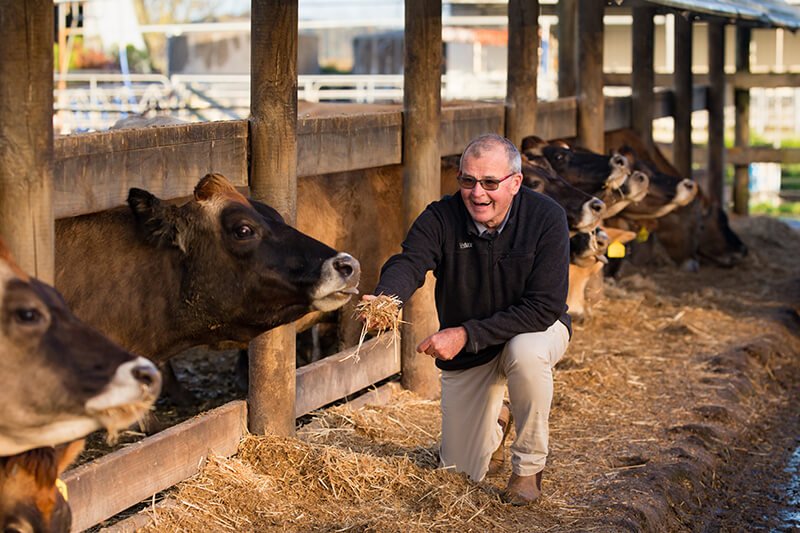Testimonials
)
 Maize silage drives cows to reach genetic potential
Maize silage drives cows to reach genetic potential
When you have the ‘Ferrari’ of dairy cows in your hands, you want to make sure they have the fuel to perform to their genetic potential.
That’s why Russell and Alison Gibb, of Zenith Jerseys, added maize silage to their farm system in 2000.
“We got sick of the weather dictating how well we fed cows,” Alison says. “We wanted our cows to be in better condition, while producing more milk.”
It has certainly done that: in the 2018/19 season, their 325 jersey cows produced an incredible 139,000 kgMS.
The Gibbs farm in partnership with their daughter Natalie on 100 ha effective at Taupiri.

Russell and Alison purchased the farm in 1984, and while Natalie has largely taken over the running of the farm, Russell and Alison are still very much involved in both a hands-on role and a strategic and directional level.
The Gibbs grow 8.5 ha of maize on farm – VPMAXX® hybrids VP432 and VP577 – which yields approximately 25 t/ha.
Maize silage is fed to the cows in Herd Homes, the amount varying according to the cows’ specific needs at that time of the season, but between 2-5 kgDM/cow/day.
Having a low-cost, high-quality feed on hand is particularly important in an industry where the payout swings in roundabouts.
“Maize silage is one of the cheapest feeds there is, reflected in the volume per hectare,” Russell says.
“The more you feed animals the better they will do, but for us the cost of feed can be prohibitive so it’s a matter of finding the right balance, so it doesn’t cost an arm and a leg.
“Also, by growing it ourselves, we have more control over the quality of the maize, and harvest times.”
Alison, who is the current President of Jersey NZ, knows the Jersey breed well.
She says Jerseys are as capable at producing high volumes of milk as Friesians, with some of their cows producing 600 kgMS in one season.
“Maize silage keeps cows in good condition so that they can partition their feed to making milk”.
But it’s not just volume; Jersey milk contains more nutrition per litre than any other dairy breed.
“The higher fat component of the milk had been seen as a disadvantage when public perception was that fat was bad for you,” Alison says.
“But now that the public have realised that fat provides flavour, it is a naturally healthy choice.”
The family has been working with VPMAXX Account Manager Barry Smallridge for some time and is very happy with the cropping support and advice he has offered them.
“We trust Barry’s advice and knowledge, and he understands our needs,” Russell says.